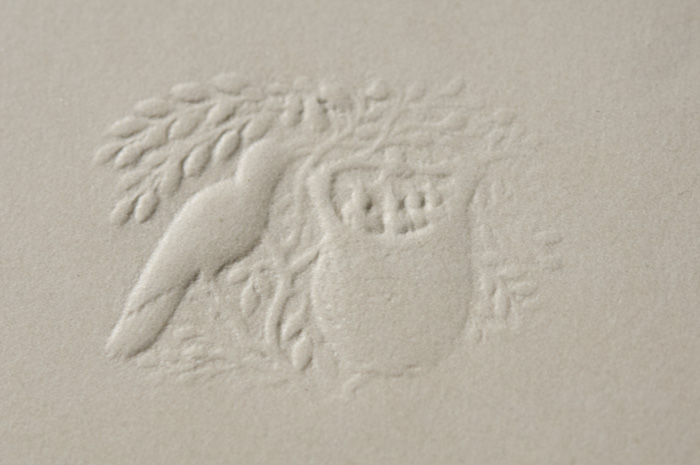 Karen L. Pavelka |
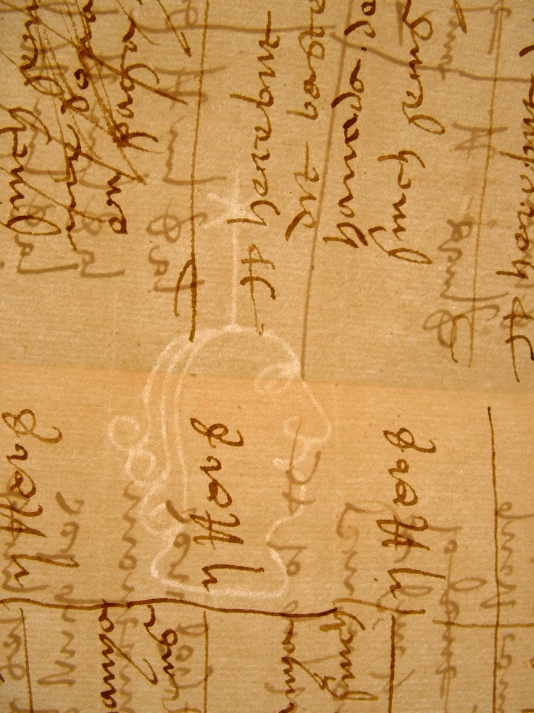 |
| Home |
Portfolio |
Teaching |
About |
| Treatment of
Watercolor 2012 |
Historic
Significance James
Gordon Riely (1863-1937), was
a prominent architect who worked primarily in Texas
and the New York area.
He built many residences, commercial and public
buildings including 16 courthouses in Texas. He is known
for his work in the Richardsonian Romanesque style and
the Renaissance
Revival style and for his commitment to raising
professional standards in architecture profession. The Decker Building was built to house the
Decker Piano Company in 1902. It is still
standing on Union Square, although in the present day it
is also known as the Union Building. Perhaps its
most significant tenant was Andy Warhol whose Factory
resided there from 1967 – 1973. It was in that
building that Valerie Solanas shot Warhol over artistic
differences regarding a film production. Description
and
Condition
The drawing
is executed in watercolor with a light, graphite under
drawing. The
artist used shades of brown, beige, orange and red to
portray the building.
The sky is lightly sketched in blue and 9
pedestrians and their shadows are depicted in dark red,
brown and violet. The
image retains a vibrant appearance and there is no
apparent sign of fading or color shift. A heavy, black
ink signature appears in the lower right-hand corner. Before
treatment the drawing was in fair condition overall,
marred by several dark stains, mat burn and residual mat
fragments. Treatment The fragments were removed from the
perimeter of the drawing mechanically, assisted by local
applications of moisture.
As the fragments were removed in the lower, right
corner, two more figures were revealed. The dark
stains were reduced using applications of organic
solvents on the suction table. Finally, the
drawing was washed on the suction table. The drawing
appears slightly lighter and brighter after the washing,
although the color balance in the treatment photographs
is not accurate. |
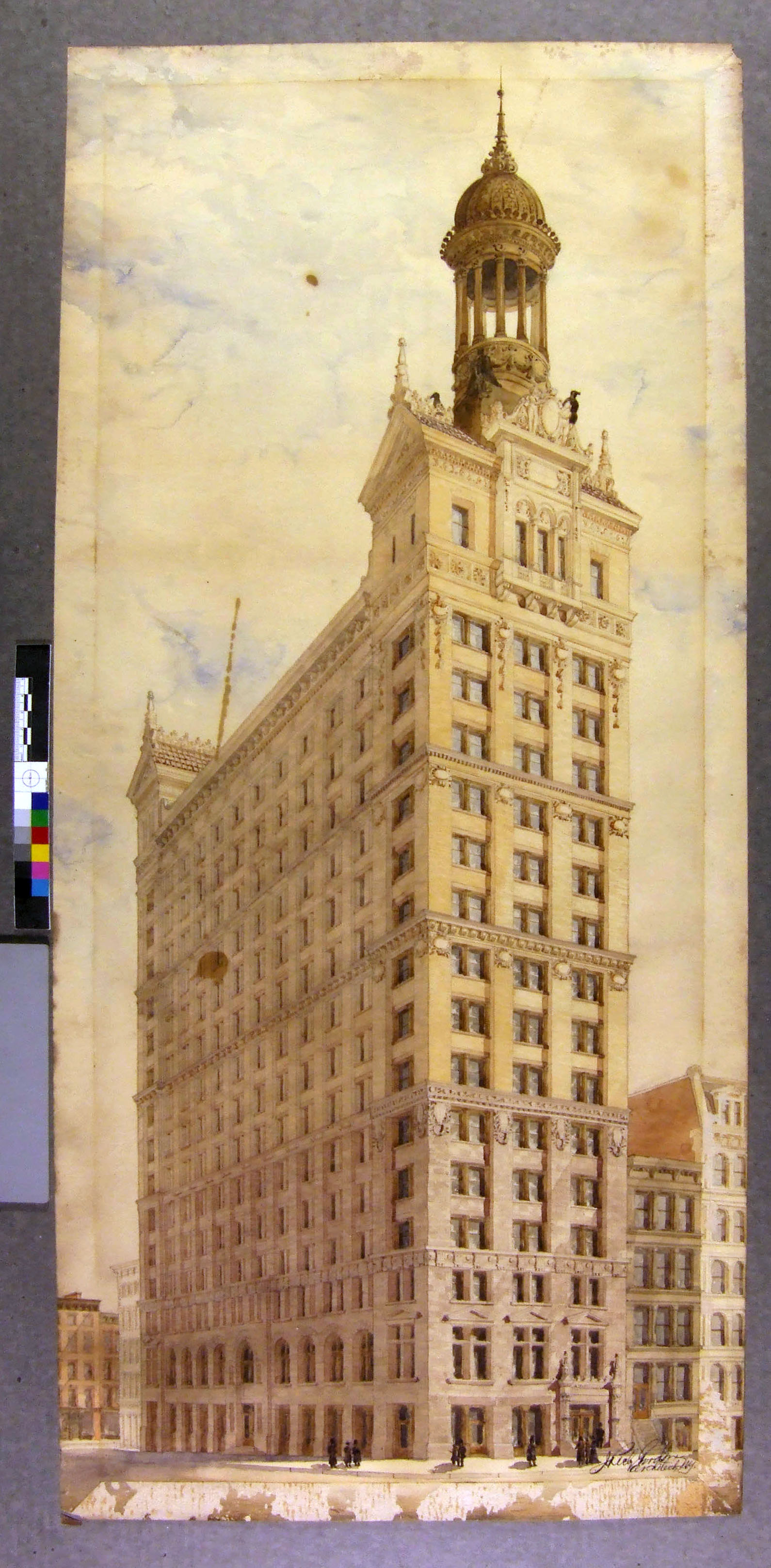 |
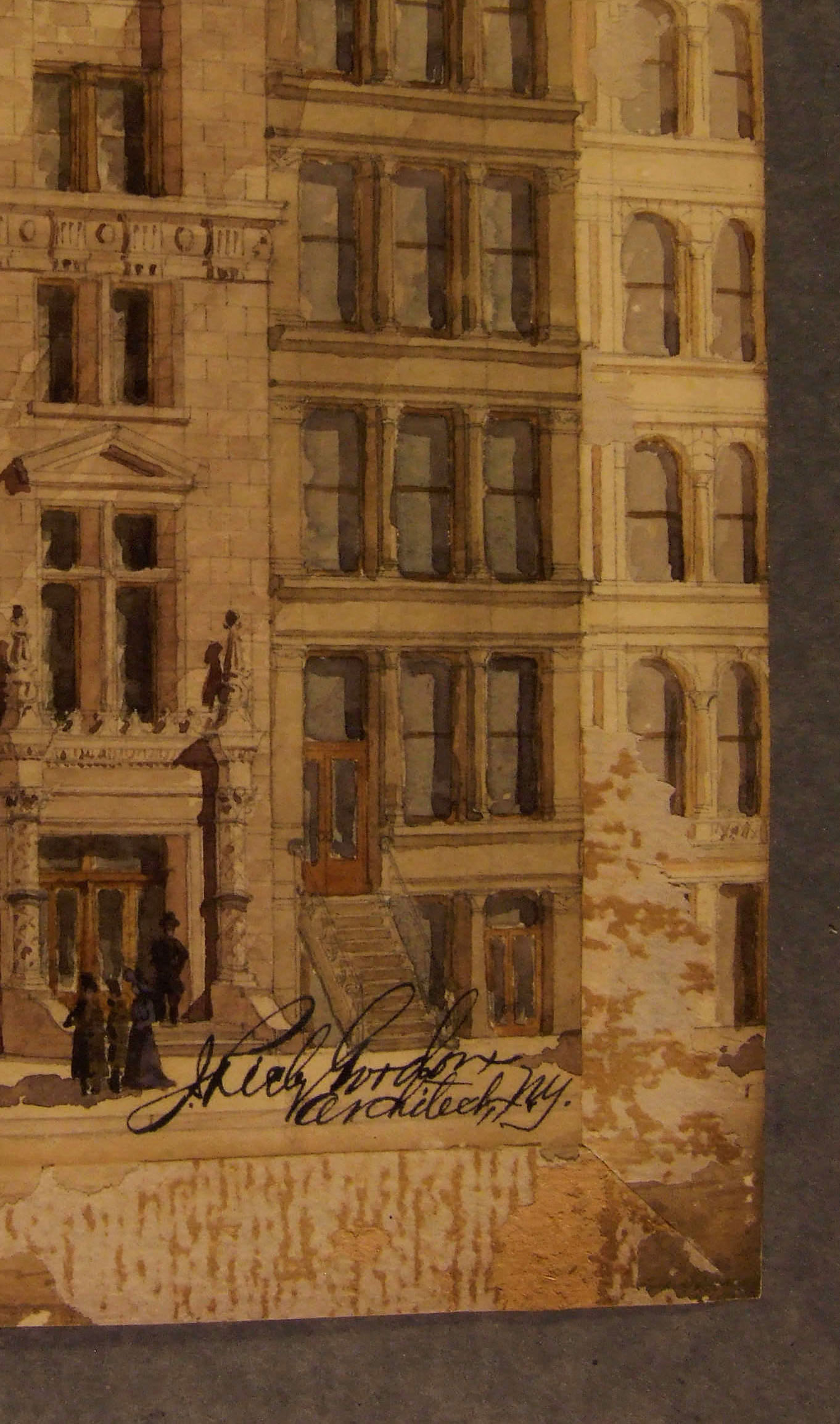 |
||
| Before treatment |
After treatment |
Before
treatment, detail |
After treatment,
detail |
| Treatment of
watercolor 2013 |
Description
and
Condition
The
watercolor drawing is a stylized image depicting trees,
foliage and figures.
A pale, graphite under-drawing is visible. The artist's
signature, in a heavier application of graphite, appears
in the lower right corner.
The drawing is in good condition overall, marred
by a light layer of surface grime overall. The most
prominent visible damage is a series of stains resulting
from the application of pressure sensitive tape,
apparently rubber based.
The adhesive has become a dark yellowish brown. Tape stains
appear on the obverse and reverse. Treatment Testing
showed no visible change to the tape stains with organic
solvents. After
consultation with the curator, the adhesive was removed
mechanically working under magnification with tungsten
needles, scalpels and tweezers and creating
as little disruption to the paper fibers as possible.
|
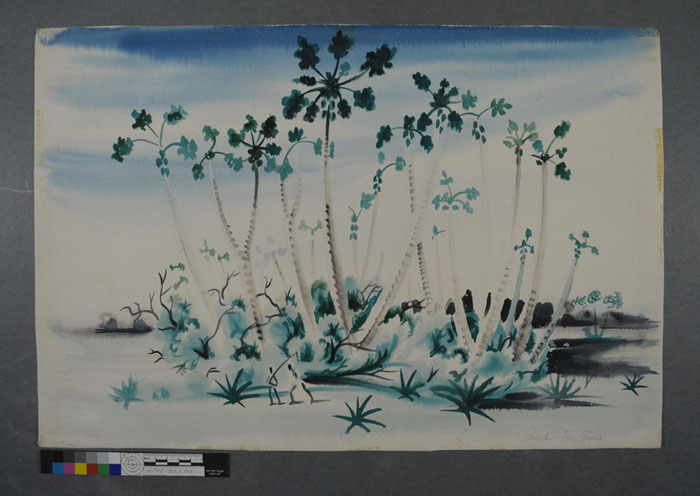 |
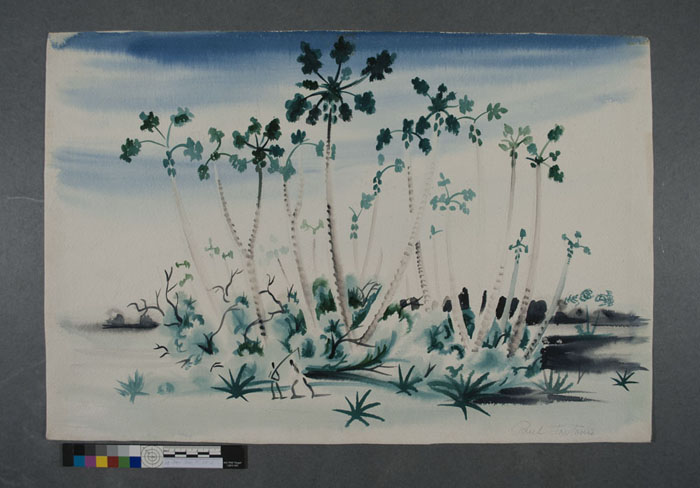 |
| Before treatment |
After treatment |
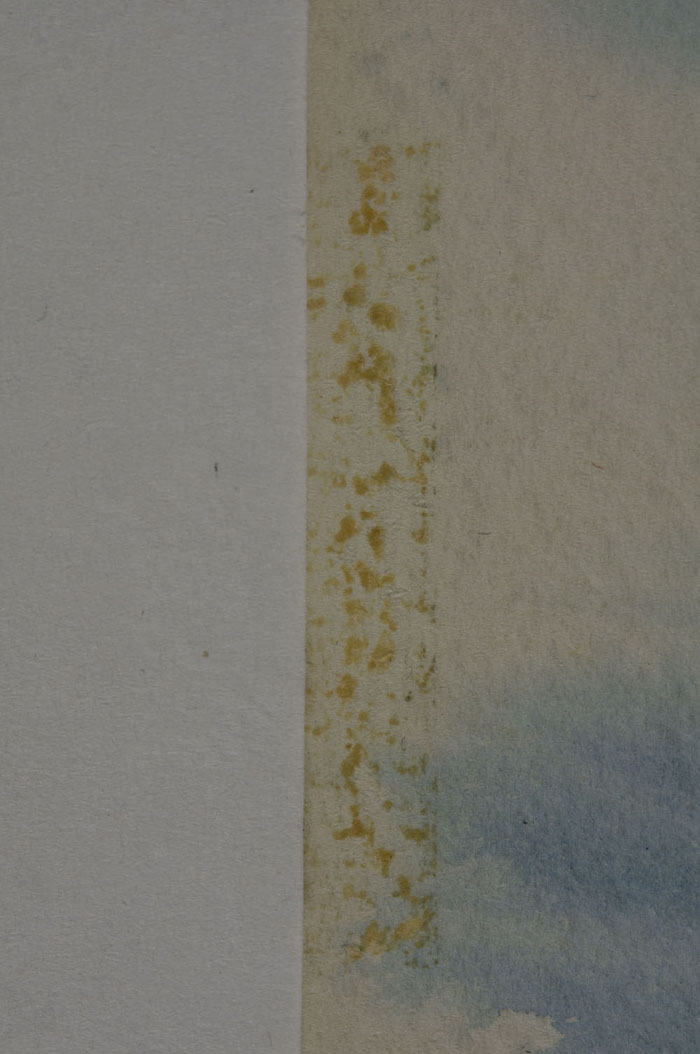 |
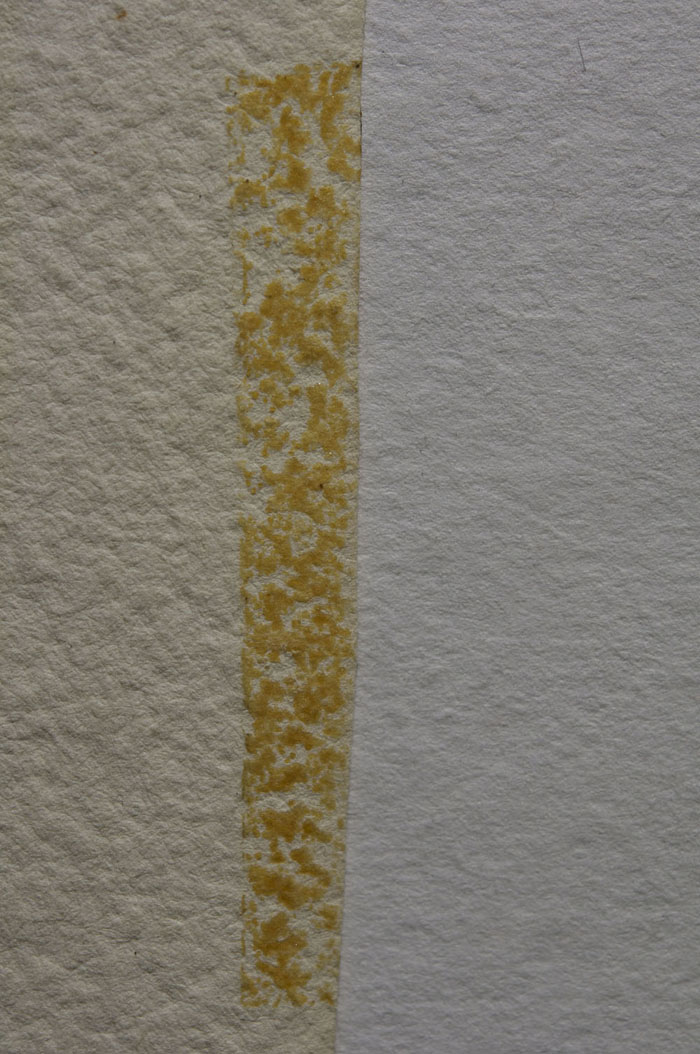 |
||
| Detail left
side, before treatment |
Detail left
side, after treatment |
Detail rigt
side, before treatment |
Detail right
side, after treatment |
|
Oil
absorbent pads: An
addition to the disaster response toolkit |
In Spring, 2013, in a
class that explored disaster salvage techniques, one
experiment involved wetting materials with water
contaminated with motor oil.
Salvaging the objects from the oily environment
proved to be challenging; detergents were slow but
effective and required copious amounts of water. In a search for
alternative methods we found oil absorbent pads, which
absorb oil while repelling water. The pads are
fabricated of polypropylene fibers. A series of tests
was run to see how the materials might be used during
disaster salvage. The
experiments described in the page linked below are
preliminary and not quantified. |
| Oil_scavenger.html |
|
Comparison
of silica gel with blotters in a microclimate |
Here is a description of a
quick and dirty experiment to evaluate sealed packages to
be used for a short term exhibit of prints. The
borrowing institution did not have an HVAC system and we
needed to test systems to protect the prints. We
ended up comparing the effectiveness of silica gel with
multiple sheets of blotter paper to buffer the
environment. |
| Buffer comparison |
| Karen L. Pavelka |
Last updated 2013 |
Home |
Portfolio |
Teaching |
About |